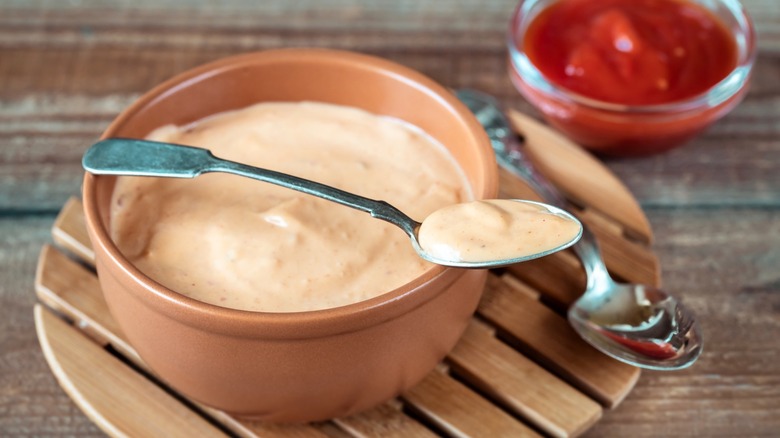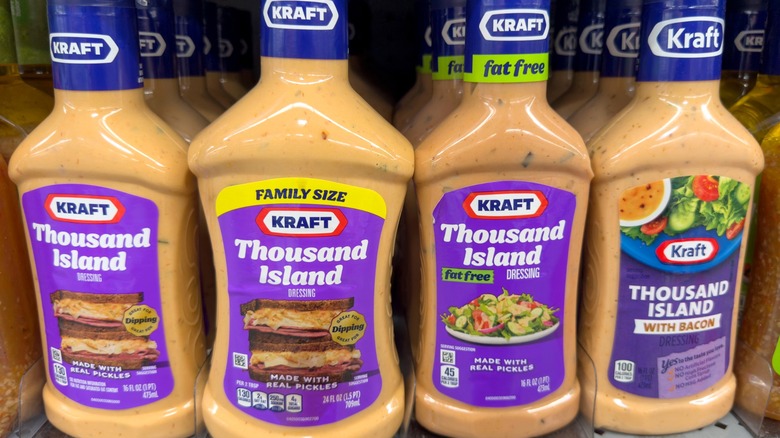What Ingredients Make Thousand Island And Russian Dressing Different?
Though both are pink in appearance and consist of a mayo-ketchup foundation, beyond that Russian dressing and Thousand Island aren't the same thing. Aside from the ingredients that make up their base (and some naming confusion amongst consumers), they utilize different flavoring components that give each dressing a signature taste.
Thousand Island is the sweeter of the two, typically utilizing pickle relish, olives, and mild pimiento pepper to give the mix some tang. It also often has green herbs like parsley and chives blended in as accompaniments to the chopped veggies. Still, the most noticeable disparity from Russian dressing is the inclusion of hard-boiled eggs that have been diced up to create the chunky texture emblematic of Thousand Island dressing.
Russian dressing is a bit spicier as it calls for horseradish as an ingredient. It also typically includes Worcestershire sauce and seasonings like paprika and mustard powder to establish a more complex flavor than Thousand Island. Once upon a time, each condiment had its own place on a menu, but these days, it may be hard to spot the difference between Russian dressing and Thousand Island based on name alone. In fact, it might be hard to find Russian dressing at all.
Russian dressing now often called Thousand Island
It used to be the case that one would find Russian dressing on a Reuben sandwich and a Thousand Island-style sauce topping a Big Mac or perhaps the Chicken Big Mac. A Thousand Island-like sauce is also featured on burgers from the fast food chain Anthony Bourdain regarded as best when you order it "Animal Style." However, as the years have passed, Russian dressing has become harder to spot, with many companies opting to make their own versions of Thousand Island that mimic its pink counterpart.
Because the condiments are so similar, it seems it is just easier to call every variation Thousand Island rather than explaining to people who are not in the know what the difference is between the two. To that end, Russian dressing has been largely phased out of the culinary landscape, with seemingly every possible mishmash of ingredients that make the pink sauce now being dubbed Thousand Island. It creates less confusion for diners who don't know the difference, but for many that also means the nuance of ingredients that separates the two has also been lost to the pages of history.

